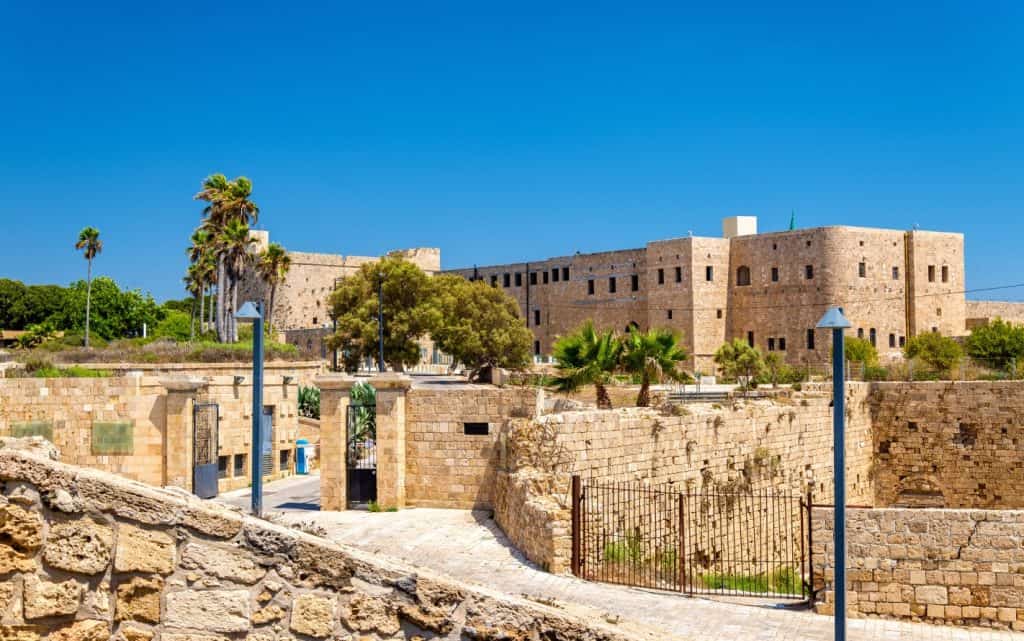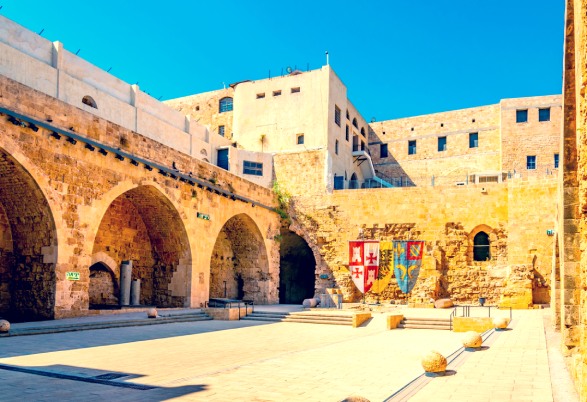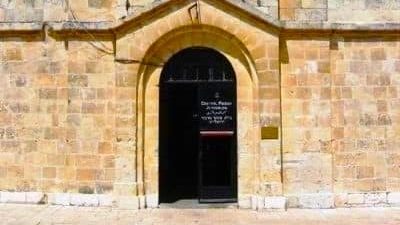The Underground Prisoners Museum in Acre is a unique and historical museum that brings to light the story of the prisoners who were held captive in the underground dungeons of the Old City of Acre during the Ottoman Empire.
These prisoners, including soldiers, political prisoners, and even common criminals, were kept in inhumane conditions in the underground dungeons, and the museum aims to shed light on their struggles and injustices. It also tells the story of the underground fighters – Haganah, Irgun, and Lehi – and their role in these events.
From Jaffa to Old Acre Tour

More About Acre Prison
The Museum of Underground Prisoners in Acre is located in the northern part of the old city, inside a citadel built during the Ottoman rule on the site of a Crusader Knight Order, and served as the palace of the region’s rulers. During the British Mandate period, the citadel was converted into a prison. The underground fighters of the Haganah, the Etzel, and Lahi were imprisoned during the struggle in the Land of Israel.
The Museum of the Underground Prisoners offers an interactive and educational experience, with exhibits, audio guides, and films that help bring the history of the prisoners to life. Visitors can see original artifacts and manuscripts from the time, including weapons and personal items found in the dungeons. The museum also provides a platform for visitors to learn about the resistance movements and the political prisoners who fought for their rights and freedom.
The Hospitsller Fortress

In conclusion, the Underground Prisoners Museum in Acre is a must-visit for anyone interested in history and human rights. The museum serves as a reminder of the injustices of the past and provides a powerful message about the importance of preserving human dignity and freedom. It is an emotional and thought-provoking experience that will stay with visitors long after they leave the museum.
During the British occupation, hundreds of prisoners – both Arabs and Jews – were incarcerated. Many members of the Haganah, Etzel, and Lehi underground organizations were imprisoned here because they struggled to defend the Yishuv (Jews living in Palestine before the establishment of the State of Israel).
By 1939, 43 members of the Haganah underground organization, including Zeev Jabotinsky, Commander of the Jewish defense of Jerusalem, Moshe Dayan and Moshe Carmel, and 38 members of the Etzel commander, were imprisoned.
Museum of the Underground Prisoners: The Prison Break
On May 4, 1947, Etzel forces broke into the prison in a daring action coordinated with the Jewish underground prisoners. Forty-one prisoners were freed, including thirty Etzel members and eleven Lehi members.
A battle ensued outside the prison walls against British police and military forces; three attacking force members and six released prisoners were killed. Operation commander Dov Cohen, also known as Gundar (District of Unit Commander) Shimshon, was among the casualties.
When the battle was over, it was discovered that 27 prisoners had managed to escape; however, eight escapees and five of the Etzel fighters were captured. Three of the five men captured were sentenced to death by a British military court.
Museum of the Underground Prisoners
1991 the Ministry of Defense restored the prison and converted it into a museum. Exhibitions at the museum take visitors through the prison, from the detention barracks and prisoner’s cells to solitary confinement and the gallows. Other interesting interactive displays include a bakery, a ‘special treatment’ cell, the escape cell, a synagogue, and the prison yards.
Musuem of the Undersground Prisnoers in Jerusalem

The Museum of Underground Prisoners: Opening Hours
Sunday-Thursday: 16:30-08:00
Friday: by prior arrangement for groups over 30 people.
Saturday: closed
To coordinate tours: 04-9911375
Here is a link to their website.

